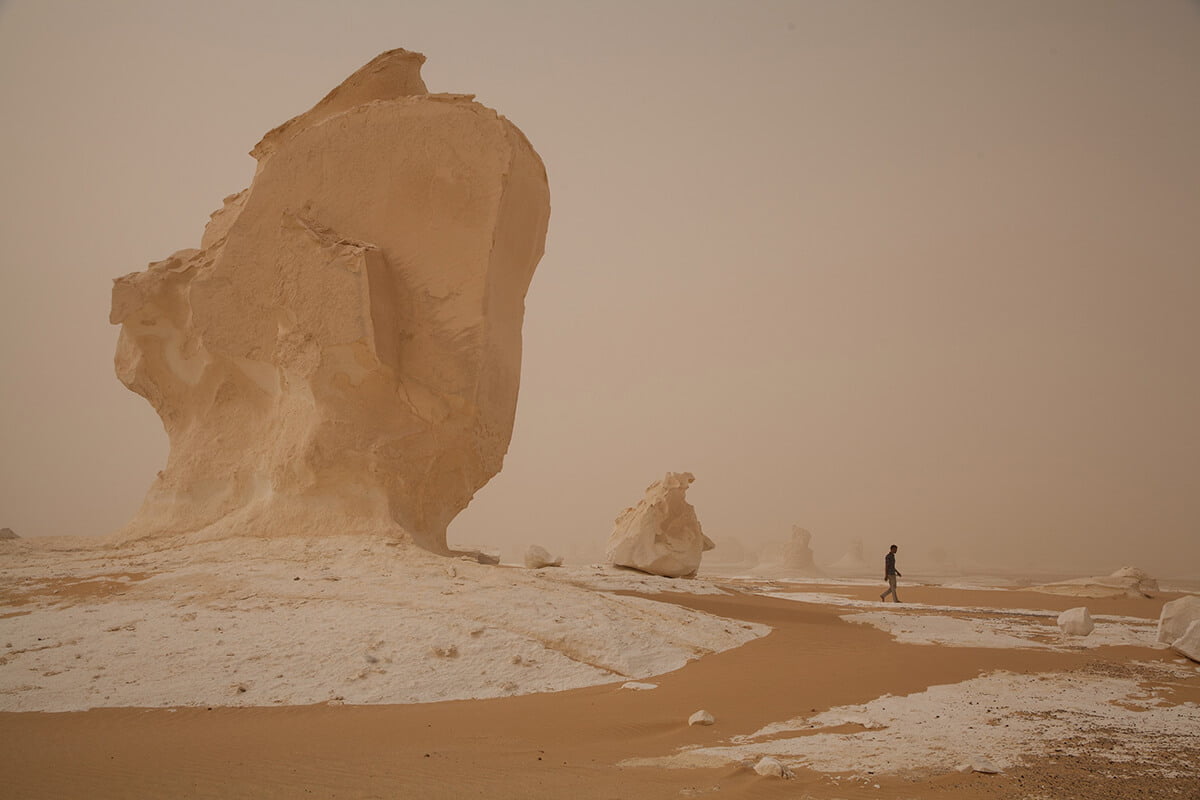EDITORS’ PICK
Views from the Roof of the World
WORLD TRAVELERS
World Travelers Editors’ Pick
Following Jonas Bendiksen’s selection of winning images for our recent WORLD TRAVELLERS competition, this compilation of 20 images represents some of the other talented photographers whose work struck us and left a mark. Each a stunning image worthy of exposure and attention…
For this month’s theme World Travelers, we really wanted to escape with the images and lose sense of reality while immersing ourselves in the myriad of scenes shared by each photographer. We wanted to go beyond looking at the picture, step through the frame of the photograph and soak up the atmosphere – hear, smell and taste the environment and action – depicted within. As the world begins to re-open for travel, this month’s theme is a great way to start the adventuring inspiration flowing again.
When selecting for editor’s picks we’re always searching for those striking photographs that have potential as an unforgettable single image, whether from a broader series or not. The accompanying text some photographers submit with their images is not always necessary, but can be relevant when understanding the work in full context.
These are intended to be a conversation starter… so feel free to join the discussion on our social networks.
BANNER IMAGE COURTESY OF NAZES AFROZ
“The megaliths and the human: After two days of sand storm in the White Deserts of the Egyptian Sahara.”
Editor’s comment: A thought provoking, alien scene to most of us, suggesting that our planet can still be quite a foreign place. This beautifully created image makes me question how ‘the megaliths and the human’ can continue to co-exist in the wake of a climate crisis. How can we continue to explore, appreciate and visit these unspoiled locations without causing further harm? It seems an impossible task, but the more we educate ourselves on locations like this, the better we’ll be able to respect and preserve.
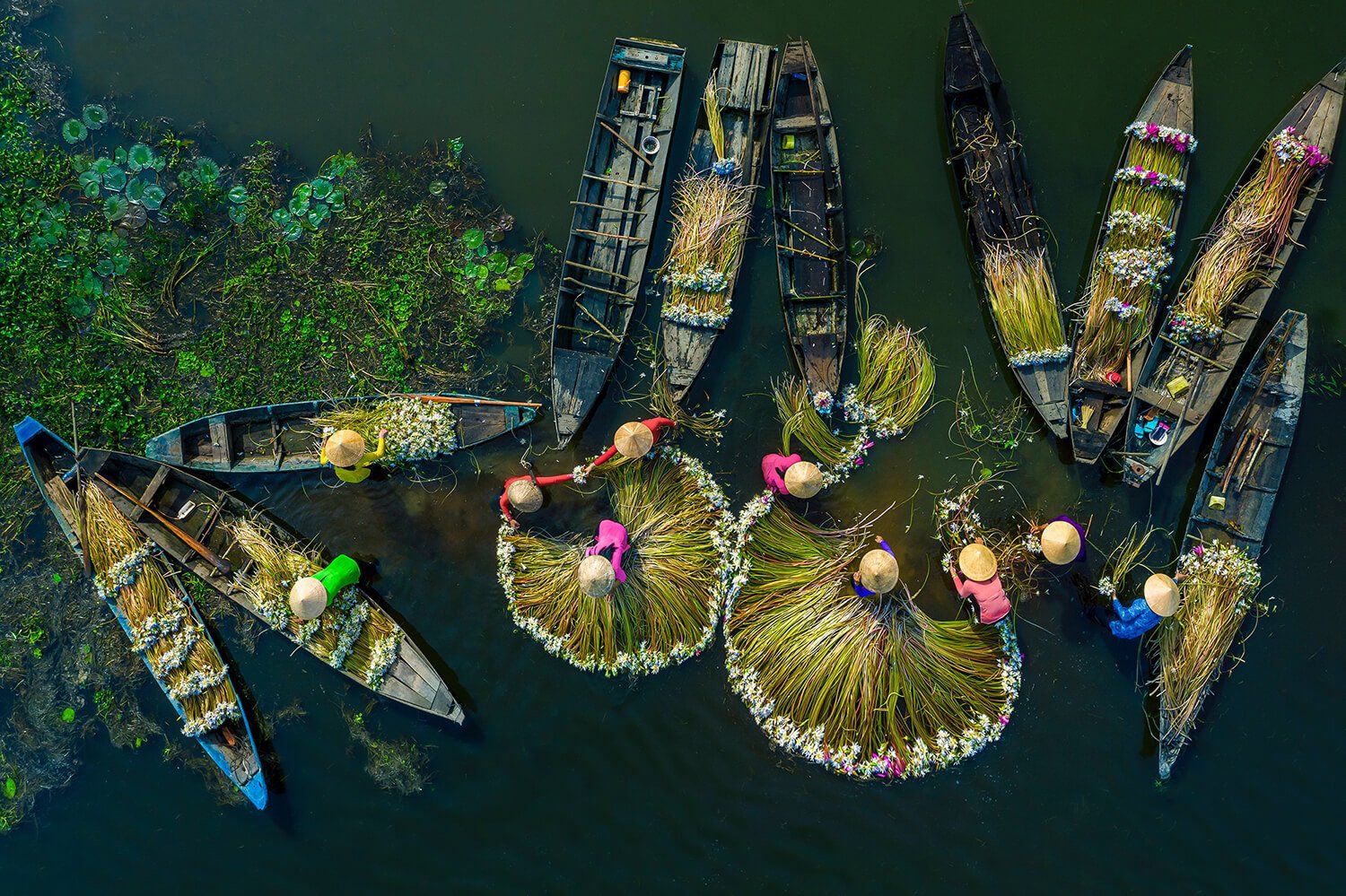
IMAGE COURTESY OF PHAN KHÁNH
@ptkhanhhvnh
“The women were washing water lilies in Long An province Vietnam, tied in bundles before they went to market. Waterlily grows naturally in many rivers and lakes in western Vietnam. Water lilies are a favorite food among locals and tourists.”
Editor’s comment: I see this almost as a ‘vintage travel’ shot, something discovered between the thin, leafy pages of a lonely planet guide of pre-Google Image days. An image that without even reading the caption or relevant information has you already booking your flight. The pattern, symmetry and subtle highlight of colour is well balanced, with a nice insight into process happening within the scene. I would love to know if the photographer dug deeper with an extended series on these women, into the history and legacy of their practice.
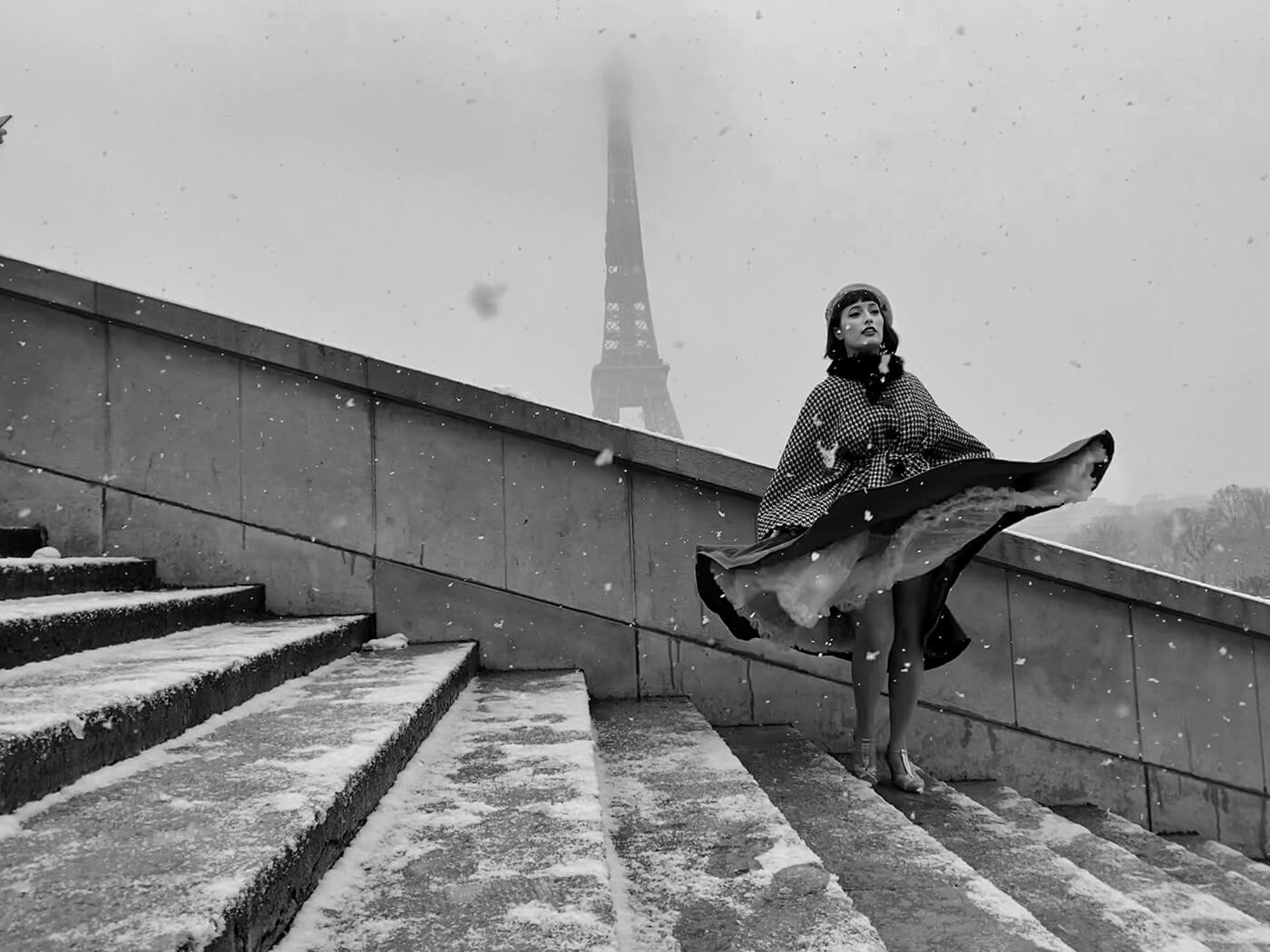
IMAGE COURTESY OF MEHDI ROUHBAKHSH
@mehdirouhbakhsh
“Dance with me, 2021.”
Editor’s comment: A playful winter scene, full of stereotypical and sentimental symbols of Parisian life. It very much feels like this image is a picturesque-postcard of an individual’s ideal experience in the French capital, leading the viewer to conclude that we all experience these popular places we visit to in our own personal way – we choose to enjoy these locations in the way we perceive them.
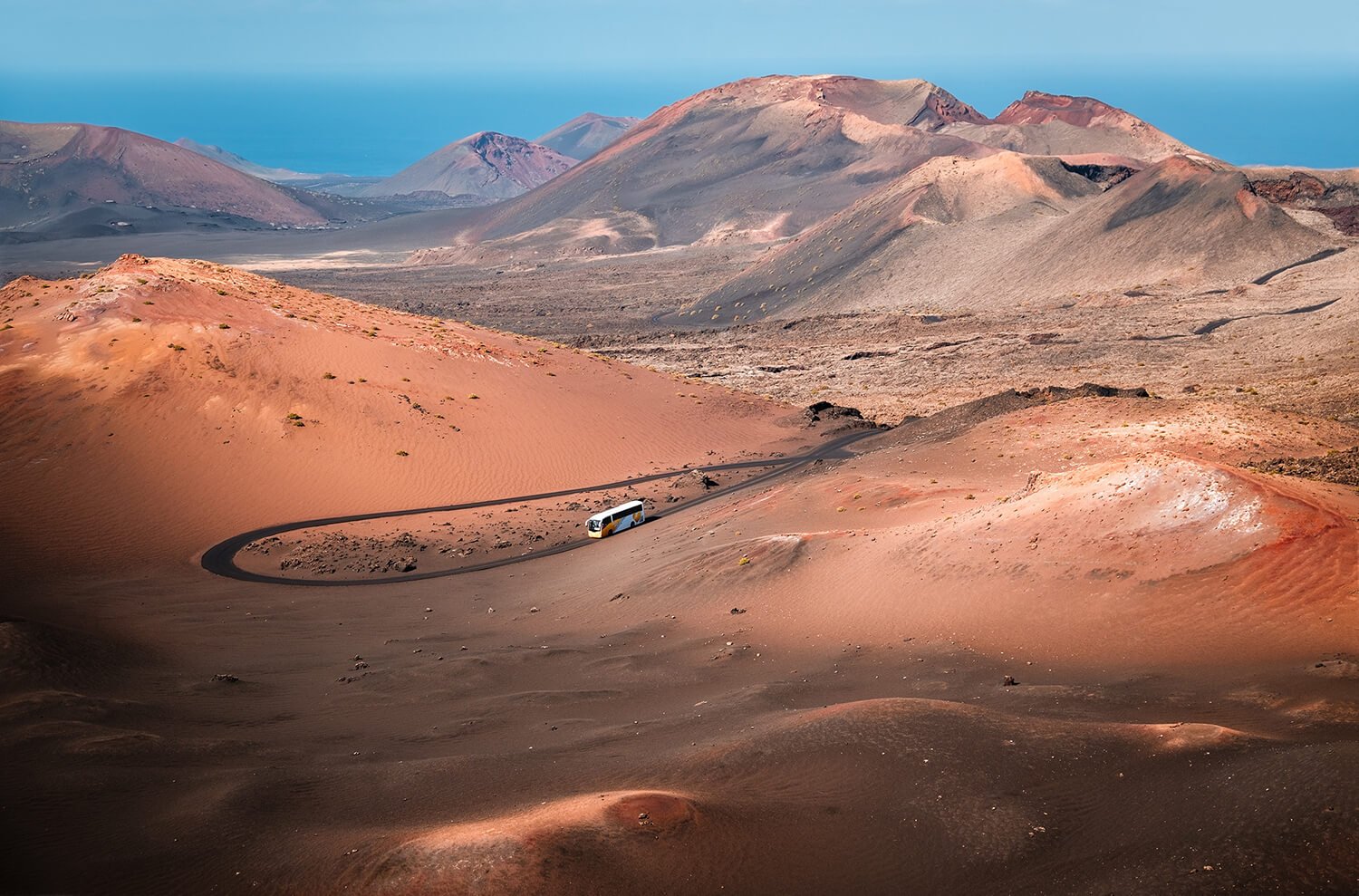
IMAGE COURTESY OF HANS WICHMANN
www.hans-wichmann.myportfolio.com
“Timanfaya: The photograph was taken in Timanfaya National Park which is located on the Spanish island Lanzarote. There is only one road inside the National Park and only authorized coaches are allowed to use it. Since you must not get out, the picture was taken out of the window and shows another coach.”
Editor’s comment: An extremely aesthetically pleasing image, with the bus right in the centre bringing the viewer further and further into the desert with it. Even more pleasing is hearing how the photographer had to work with the restrictions of their confinements to capture the image. The behind-the-scenes process of how an image is taken is usually omitted from captions, or when putting context to images, but it’s always fun to imagine the strange shapes and positions photographers have to achieve to obtain their ideal shot. A beautifully composed image – from in front of and behind the lens.
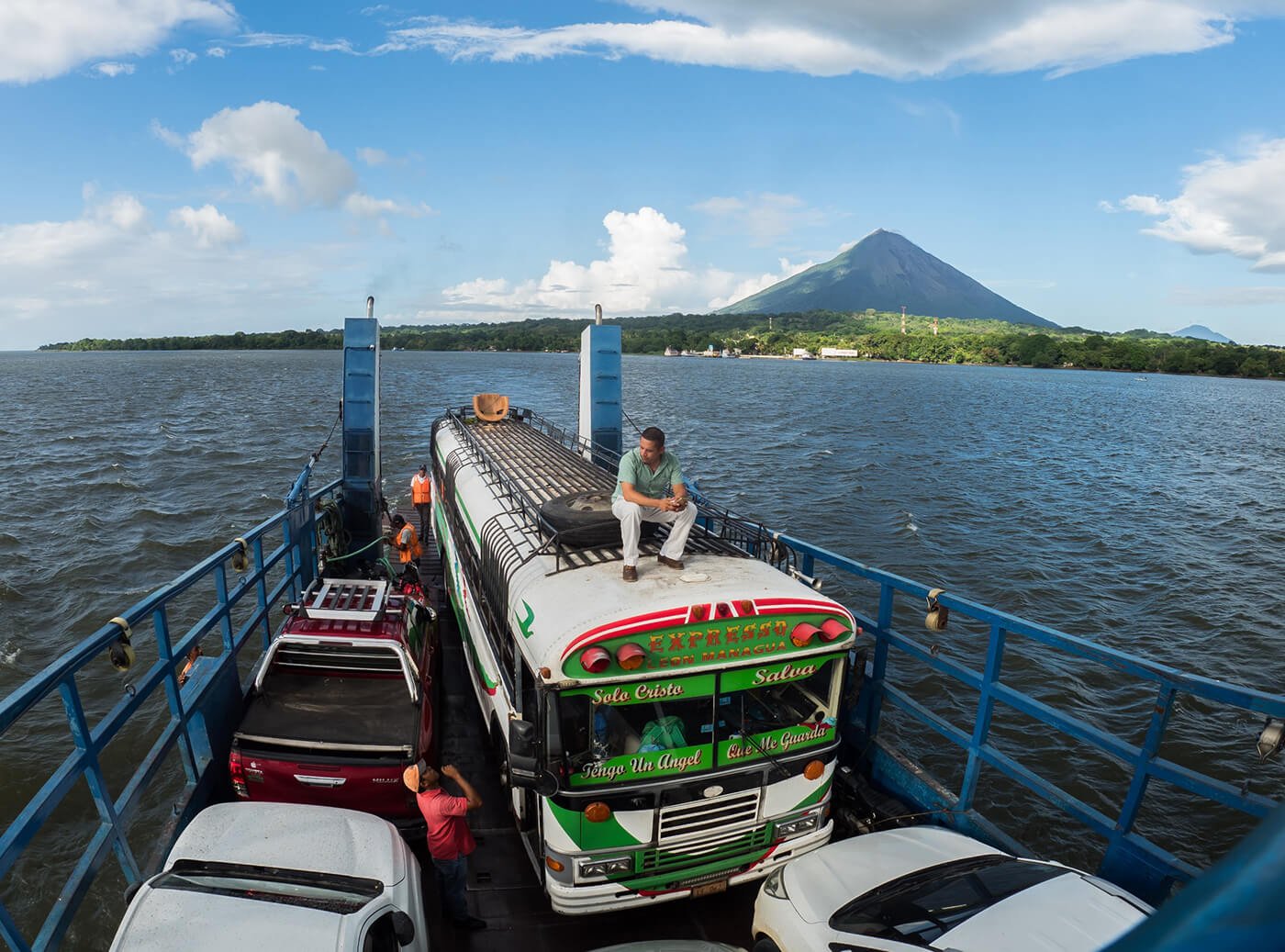
IMAGE COURTESY OF FELIPE MILLAN
@felipemillanz
“Ferry to Ometepe. A little scary ride over the Cocibolca Lake in Nicaragua, the ferry was overloaded with people and a bus, this unusual fresh water lake has bull sharks and crocodiles in it, on the background you can see Ometepe island and the Concepcion volcano, an experience to always remember.”
Editor’s comment: Immediately the image creates a stark contrast to the accompanying text. A beautifully composed scene of mountains, water and people, complete with a precariously perched passenger taking in the passing views and appearing to be uninterested (or unaware) of any potential threat outlined by the photographer. Within this image the adventurers’ fear of the unknown and the locals’ familiar, mundane commute clash in an unassuming image – two people in close proximity seemingly having very different experiences of the same journey.
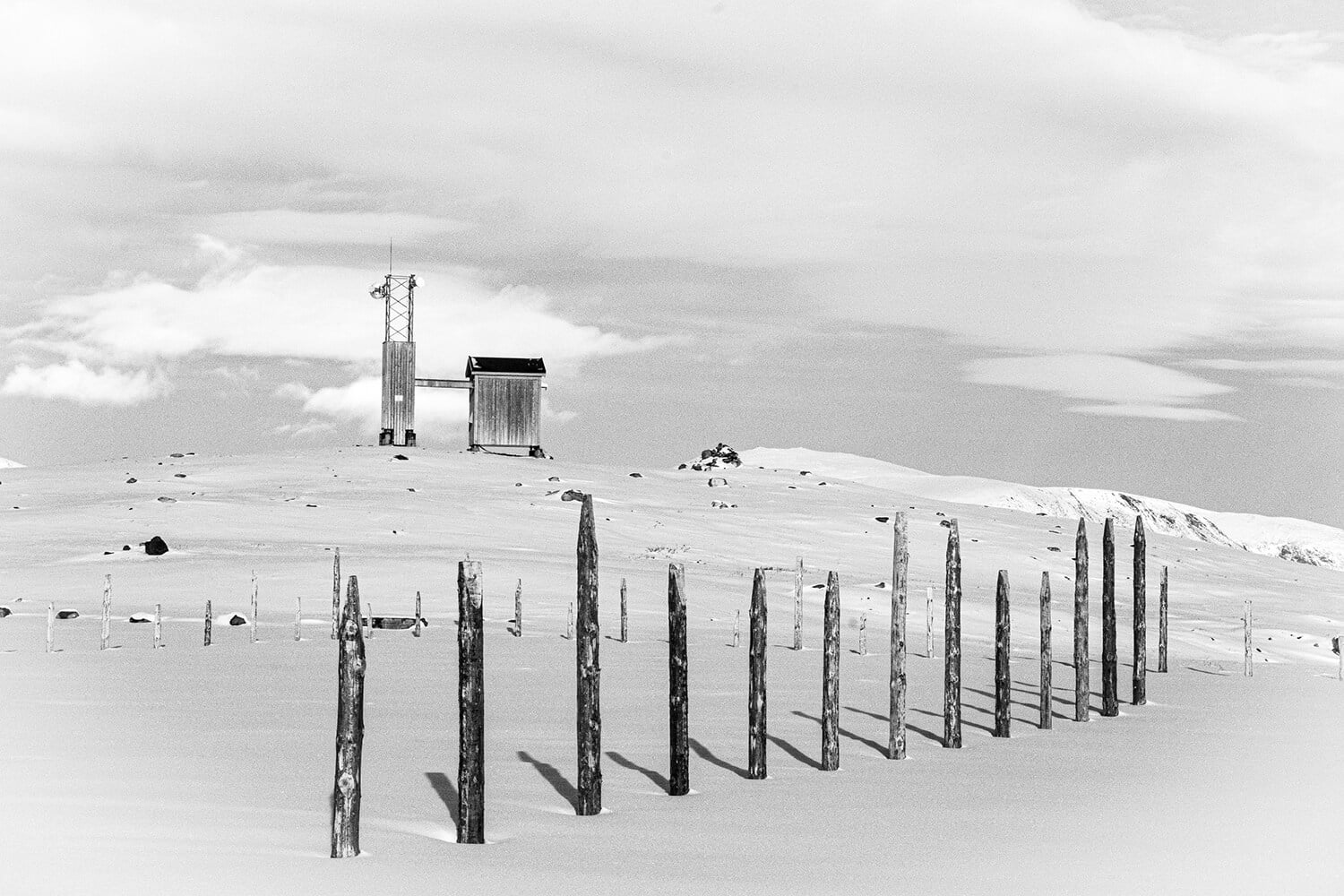
IMAGE COURTESY OF ALAN CULLVERHOUSE
www.alanculverhouse.com / @cre_esprit
“A series spanning years and miles. From the middle of Turkey, through England, Norway and to New York these images span the ingenuity of humankind and the magnificence of unspoilt nature. Snohetta, Norway.”
Editor’s comment: A picture from a very distant past may be an initial thought when viewing this image – the soft tonal range, black and white landscape devoid of humans but full of evidence of their presence. I love the use of negative space, the criss-cross of subject matter, creating lines for the eye to slide across. I would love to see the wider series, the landscapes captured in the various contrasting countries, and how the photographer visually ties them all together in one narrative.
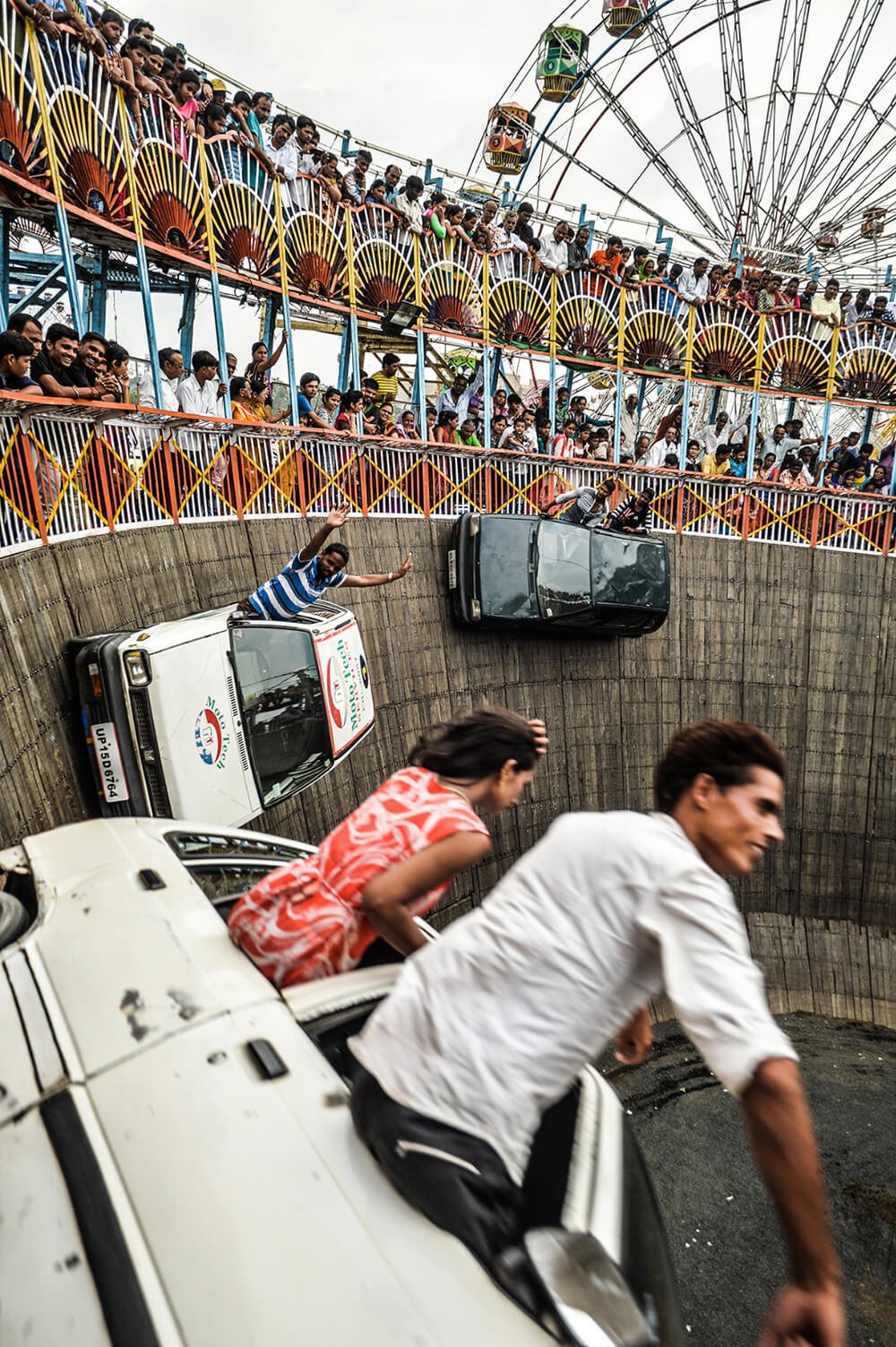
IMAGE COURTESY OF SIDDHARTH KANERIA
@kaneria.siddharth
“The photograph is of Daredevil Stuntmen at “Well Of Death” performing in their car. Hundreds of spectators crowded around a circular pit to witness daredevil drivers in cars & motorcycles performing stunts in a vertical pit known as the “Well of Death.” Once a sight at festivals across northern India, the practice is now waning but that doesn’t stop festivalgoers and stuntmen from capitalizing on the few remaining Wells of Death in the country. The Photograph is one of the biggest “Well of death” which exist in India. It is said that only 6 of this kind exist.”
Editor’s comment: I see how the ‘Well of Death’ would fall under a more macabre section of tourist attractions, reminiscent of when people would travel to Rome to witness the Christians huddled in the arena awaiting their fate by lions’ jaws and claws – the difference here being these are willing participants. Why are we so eager to see others flirt so intently with death? I’m not too sure what primal instinct draws us to these events but it’s enough to draw my attention to this image. I love the proximity the photographer has to their main subjects – slightly blurred, but seemingly cool and collected – a juxtaposition to the speeding pace and towering backdrop of spectators.
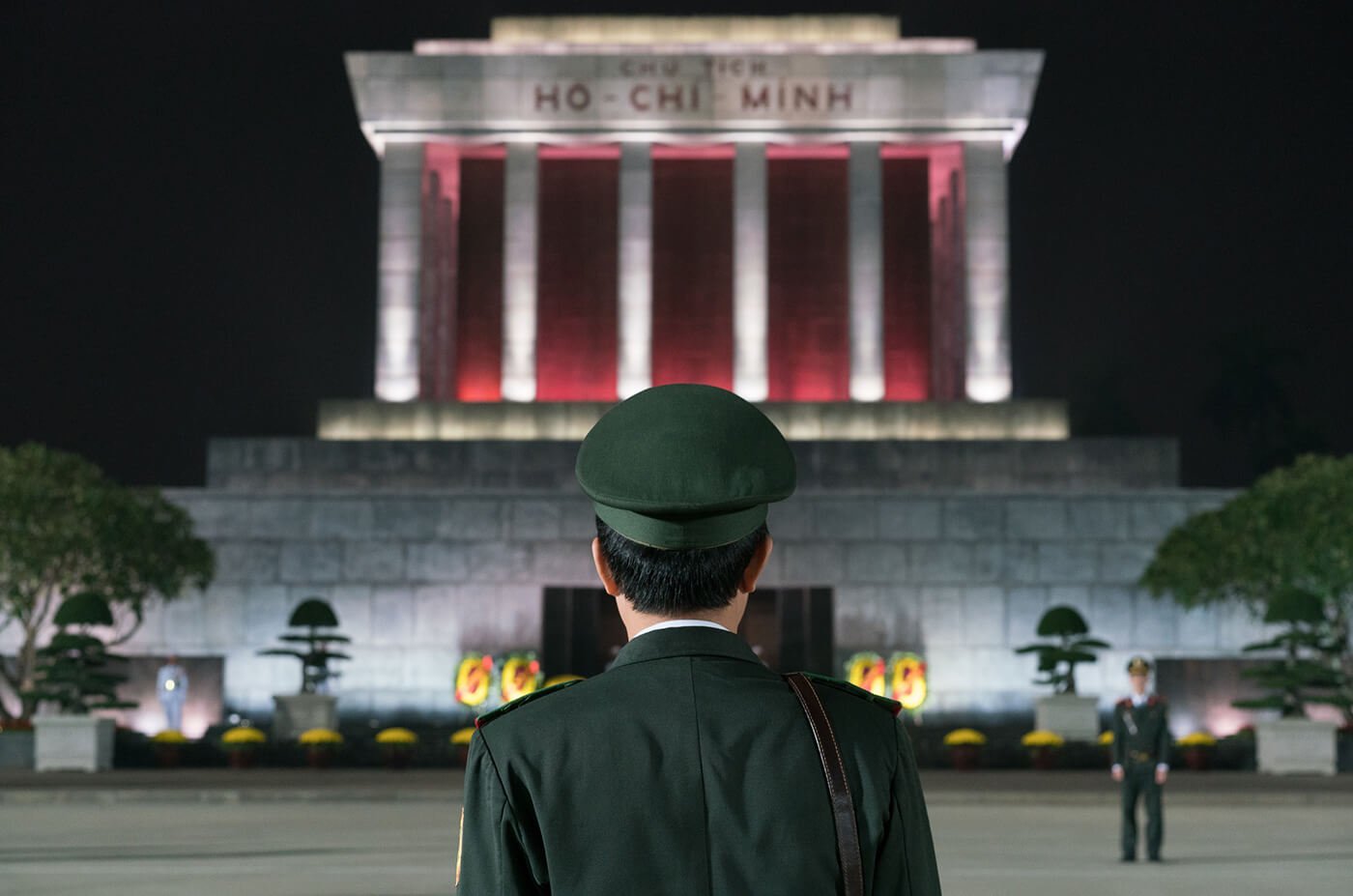
IMAGE COURTESY OF TODD BROWN
www.toddbrownphoto.com / @toddbrownfoto
Editor’s comment: It would be great to have more context and insight into this image, visually strong, and bold with a select striking colour palette and interesting perspective of this historic city. I’m intrigued to know how and why the image came about. However, the photograph alone does bring home the fact we can all be world travelers from our laptops, or smart devices, with limited information to begin with – jumping from the image to any website with information on visiting Vietnam and the many locations, landmarks and buildings that attract national and international tourists in to learn about its sobering history.
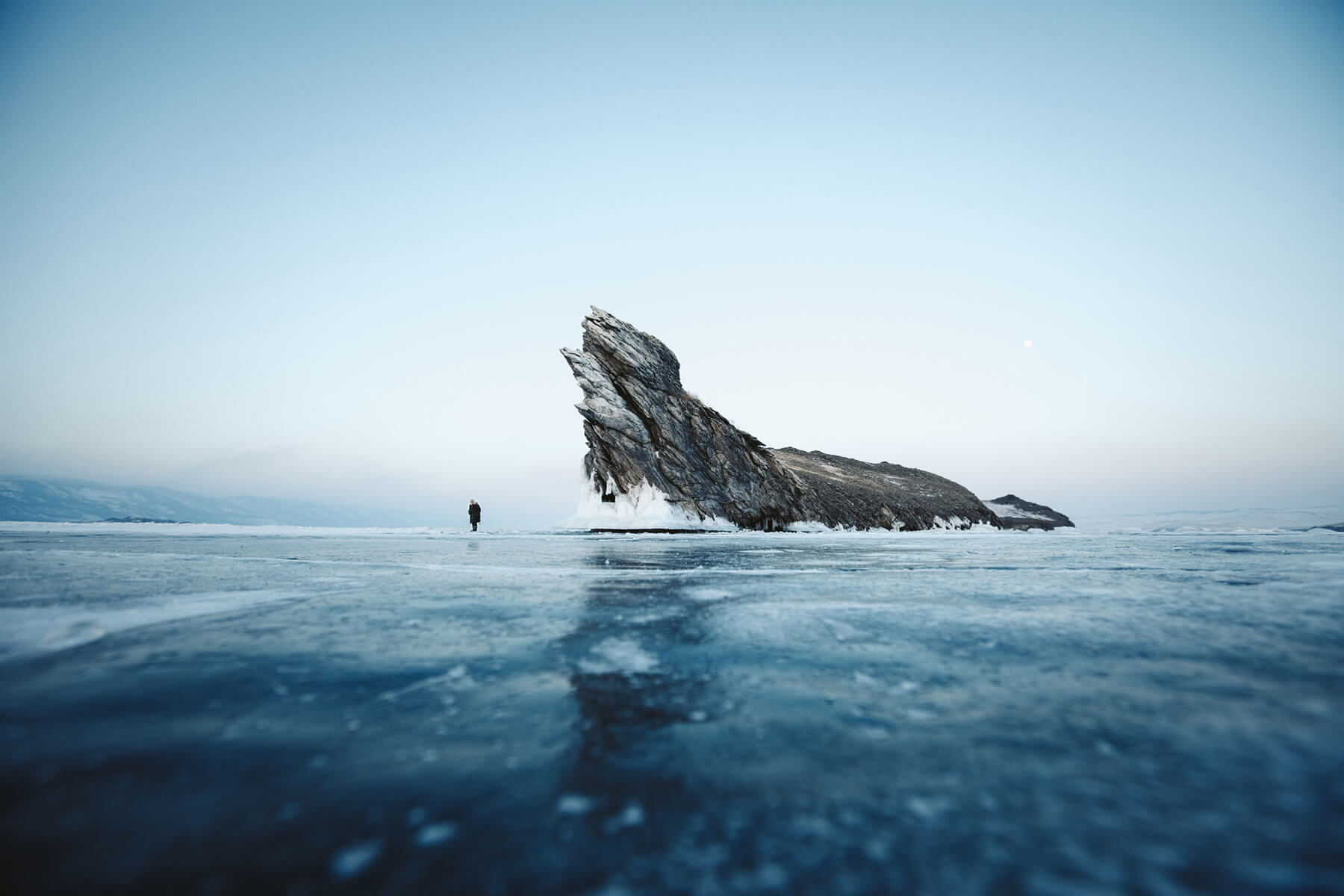
IMAGE COURTESY OF PAOLO VILLANI
@_pol
“Alone in Cape Dragon, Baikal lake, Siberia. Russia.”
Editor’s comment: Emanating isolation in every corner, this polar landscape, with a lone figure deep in the distance, is dominated by the enormous shard of rock – emerging like a giant monster from the ice-locked sea. It depicts a perfect balance of natural beauty and potential danger, for both the photographer and the solo figure exploring the landscape.
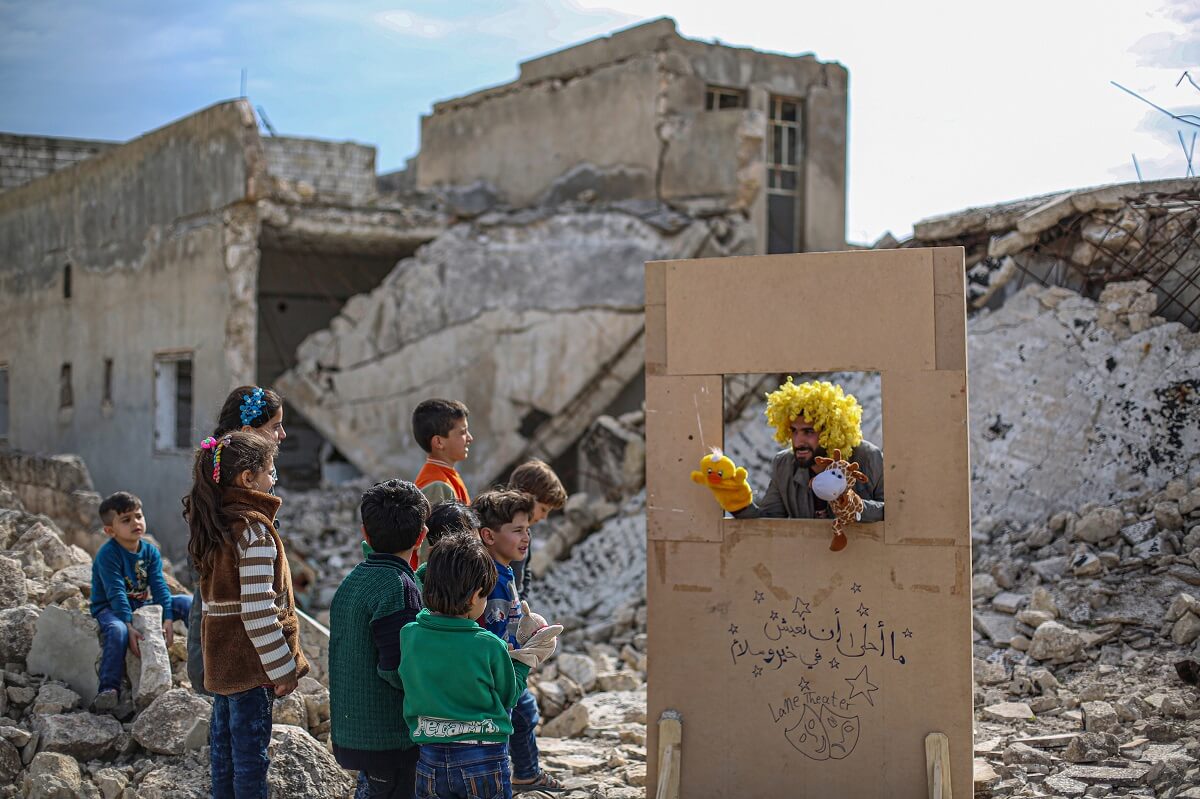
IMAGE COURTESY OF MOUNEB TAIM
Editor’s comment: It’s not a wild statement to say that ‘travel can start anywhere’. This image is a simple reminder that our imagination is the first – and most frequent place – we travel to. However, that’s not to say that this is a simple image. The structurally damaged surroundings certainly pose lots of questions and, potentially, concern for the welfare of the subjects within, but also emphasises that regardless of circumstances there are still people in life attempting to create joy for their community. This photograph is a heartening postcard from a cheerful imagination.
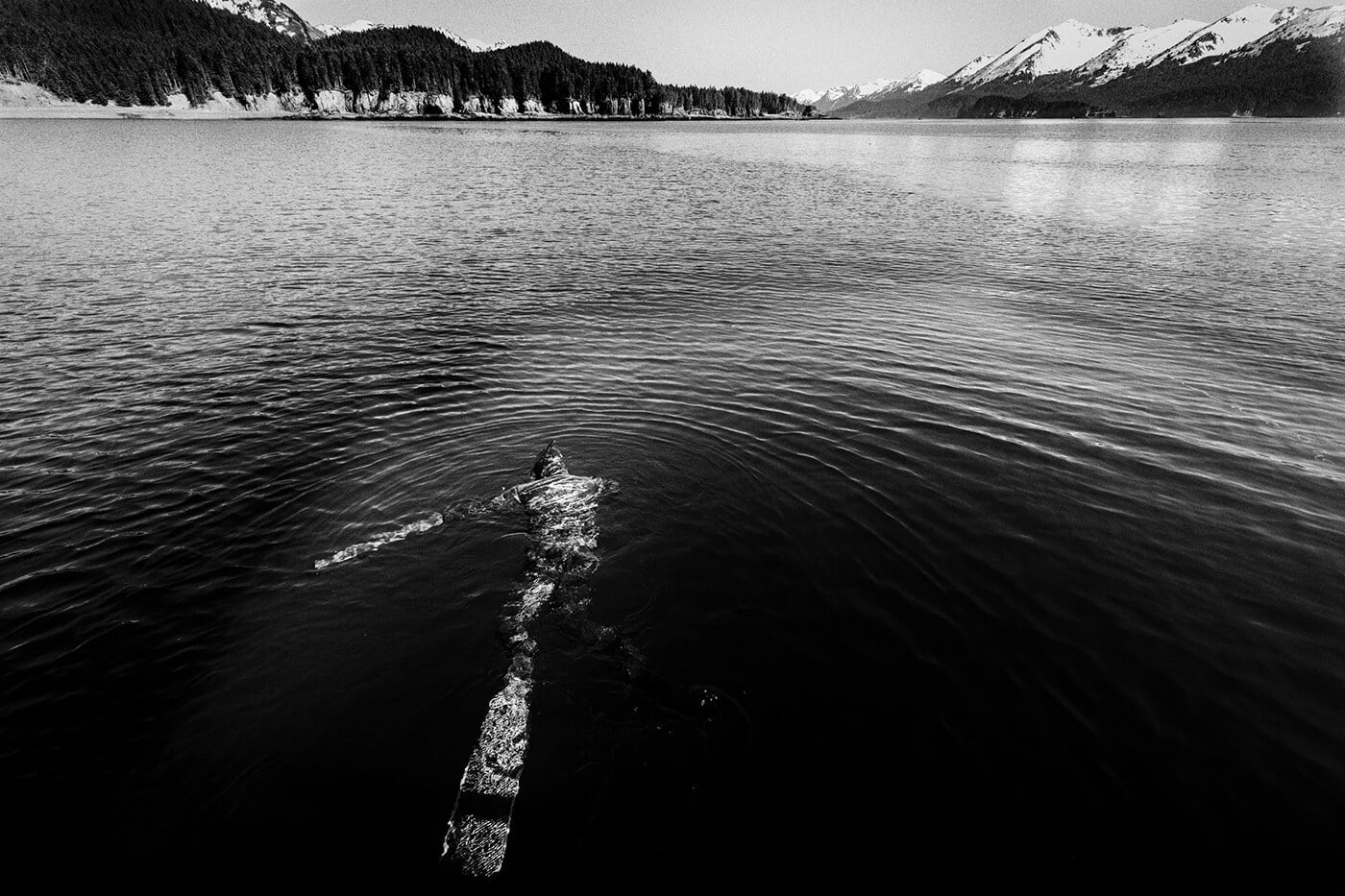
IMAGE COURTESY OF RAFAEL DE LA UZ
@rafaeldelauz
Editor’s comment: Diving in the icy-cold waters of Southwest Alaska is surely a particular interest, and an exceptional experience for the person who chooses to embark on this extreme activity. Reminiscent of an Ansel Adams landscape, the photographer doesn’t let either the mountainous landscape or the diving subject dominate the scene, instead they share it equally, potentially illustrating the harmony between humankind and the natural environment.
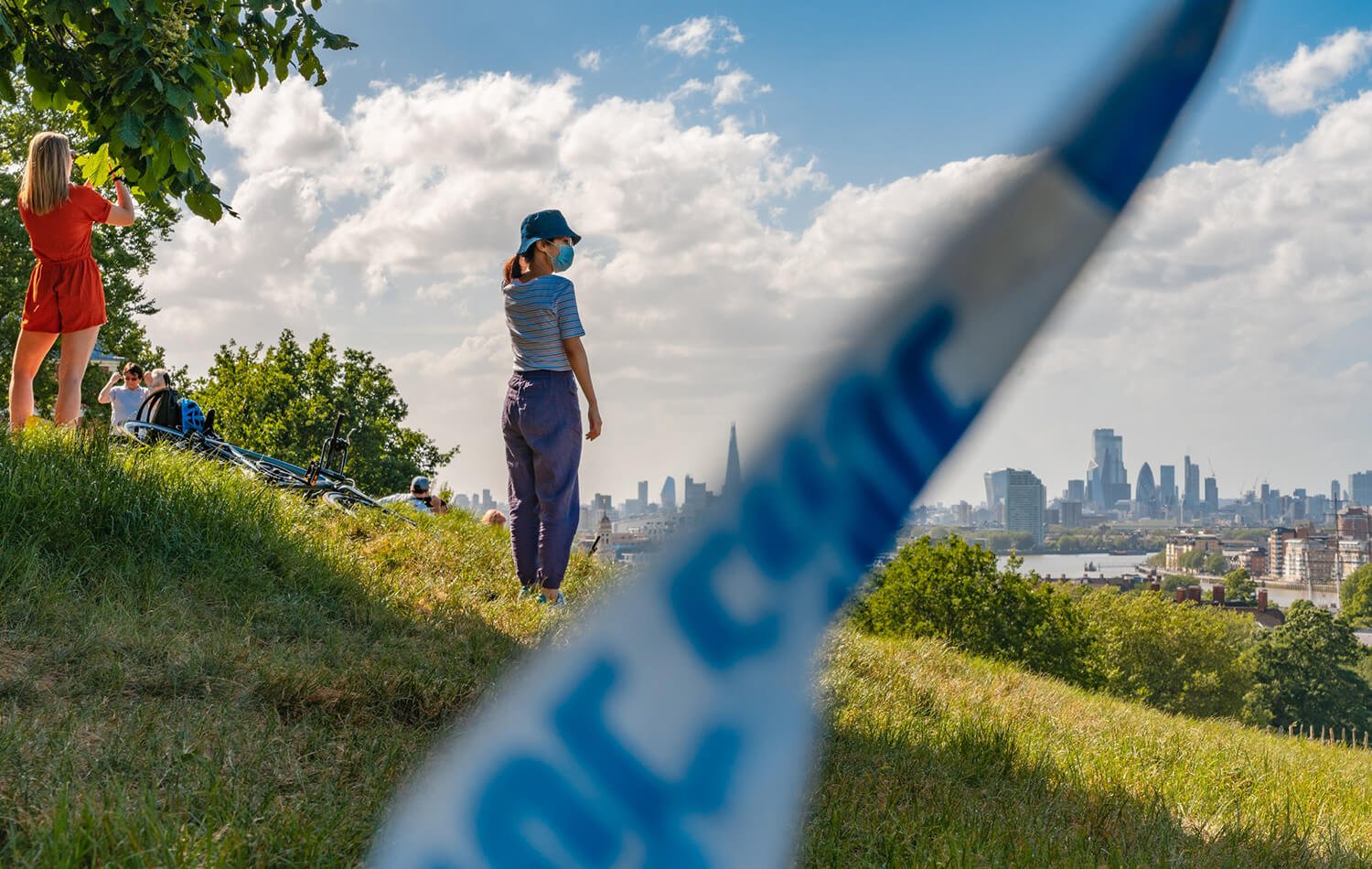
IMAGE COURTESY OF NATHANIEL PLEVYAK
www.nathanielplevyak.com / @nathanielp_photography
Editor’s comment: A photograph that insists you take a second look. From the blues weaved throughout the scene and the blurred obstruction in the foreground mirroring the London city skyline depicted in the background, the image is one that lets you just sit and view without any intention of finding a significant signal or message. The viewer takes it all in, the eyes resting on the main subject, looking out at the view that lies ahead… then back to the blurred obstruction – a scarf, a bag strap… police tape? Questioning but not knowing.
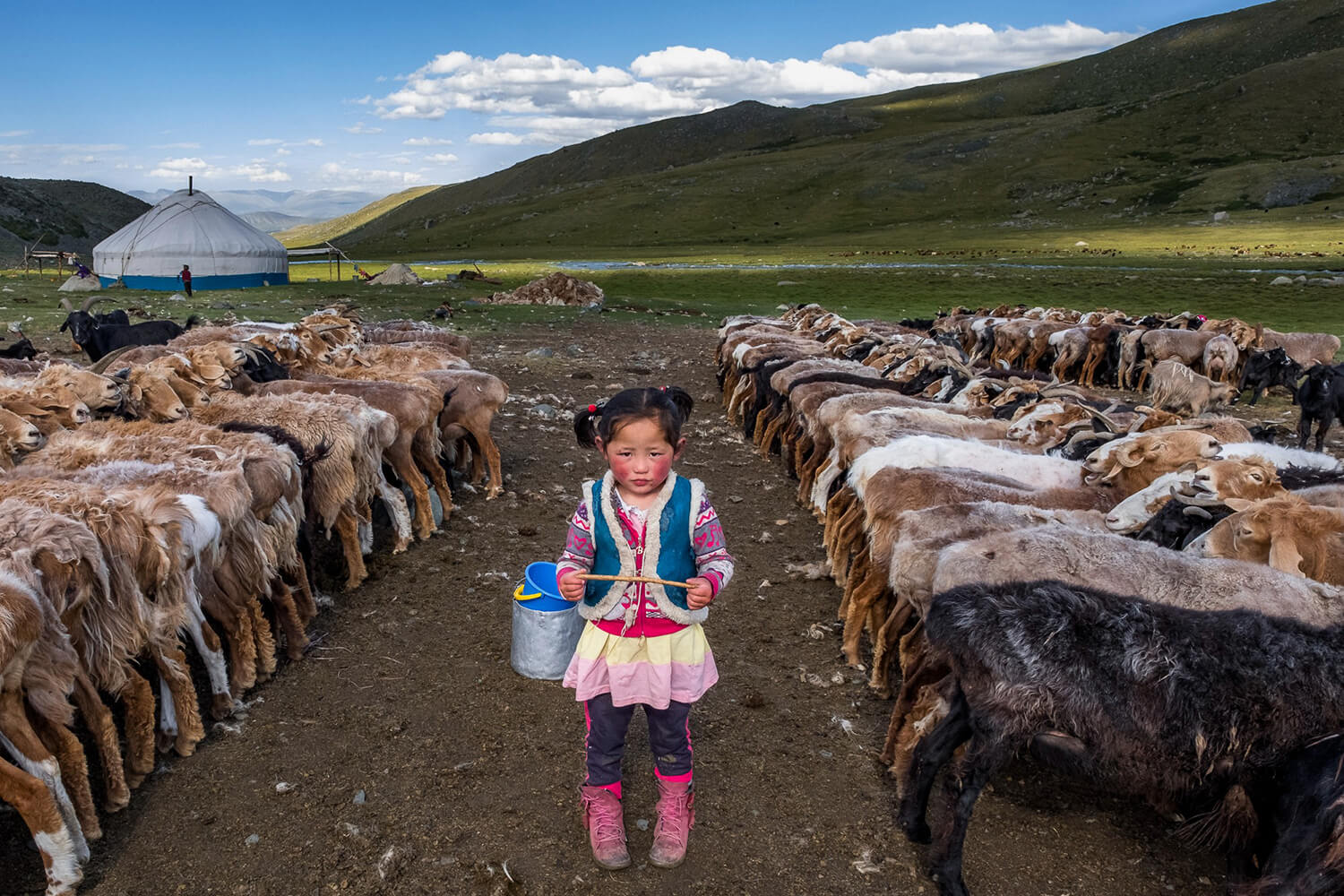
IMAGE COURTESY OF FRANCE LECLERC
www.franceleclerc.com / @franceleclerc
“Among the sheep. This little girl is from the Kazakh ethnic group in Mongolia, a semi-nomadic people who maintained a strong connection with the tradition they had practiced for generations. The Kazakhs migrate with their flocks to look for pasturage as the seasons change. There is an incredible amount of work associated with this lifestyle. Kazakh families are typically large and children happily take part in the chores starting at a very young age.”
Editor’s comment: This image immediately drew me in with its various elements of rural, nomadic life and its vibrant colours – but mainly the little child, unassuming and unperturbed by her surroundings. The theme of ‘World Travelers’ again echoes in the background with images from lives and communities we don’t normally see or interact with via mainstream media. The photographer ensures us that “…children happily take part in the chores starting at a very young age”, and I’d love to know more about this aspect and see where the narrative goes with this series.
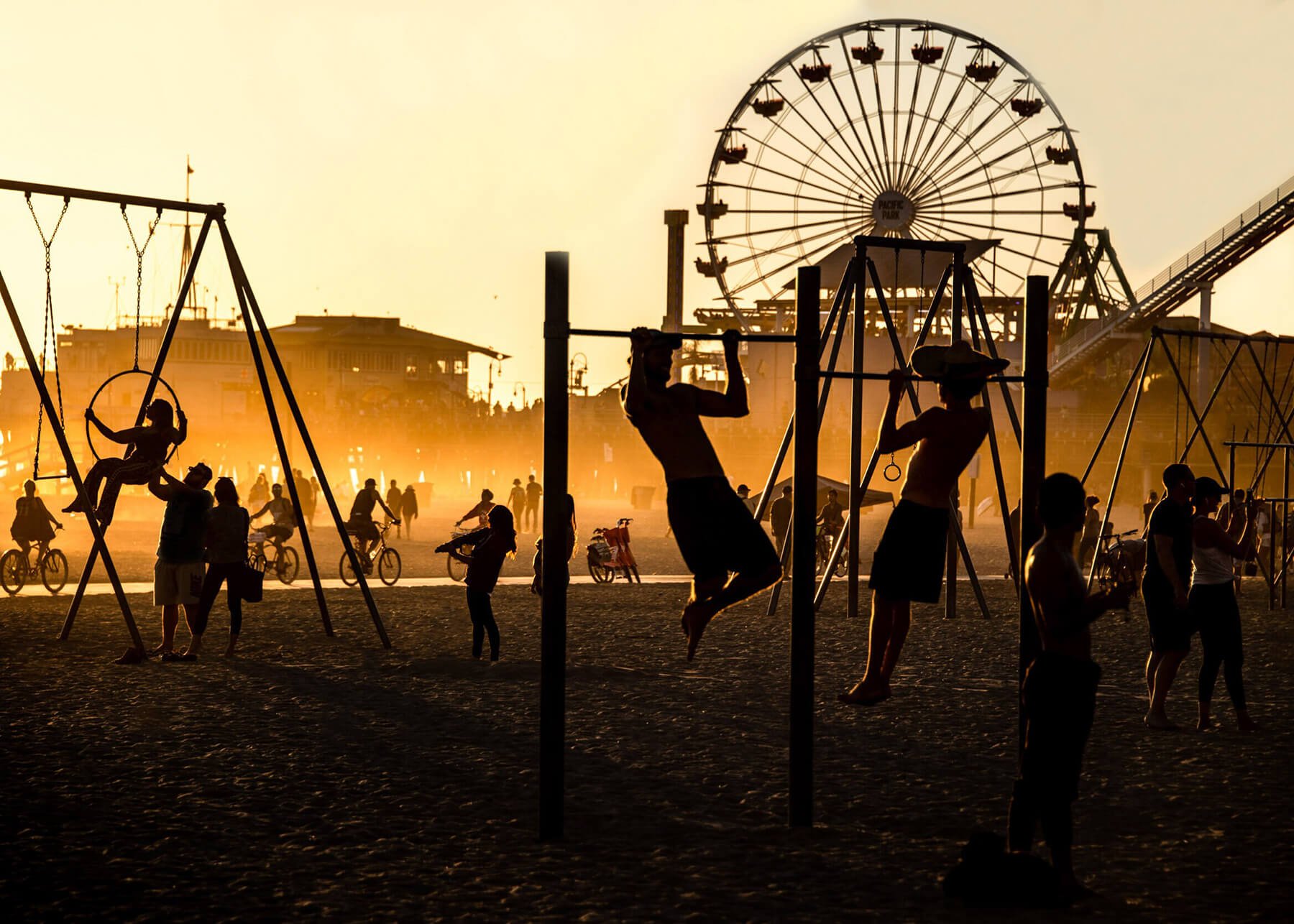
IMAGE COURTESY OF SANDRA CATTANEO ADORNO
www.sandracattaneoadorno.com / @sandracattaneoadorno
“Photographing for me is always an exploration, always an adventure. I never set out to photograph something in particular or a story. I let my eyes guide me. Where they take me is unknown to me: I love photography because it allows me to be open to the world and the people around me in ways that always surprise me. In this series I followed the beautiful Californian light and let it guide me to situations that surprised and inspired me.”
Editor’s comment: Here we see this busy West Coast sunset through energetic eyes – the photographer shares their delightful response to their surroundings through the image. A lot of photographers are known to chase the Californian light, use this natural source as a foundation for their work and it’s no surprise to see why with this warm and welcoming scene. It’s clear to see a very positive and natural process is involved with images like this.
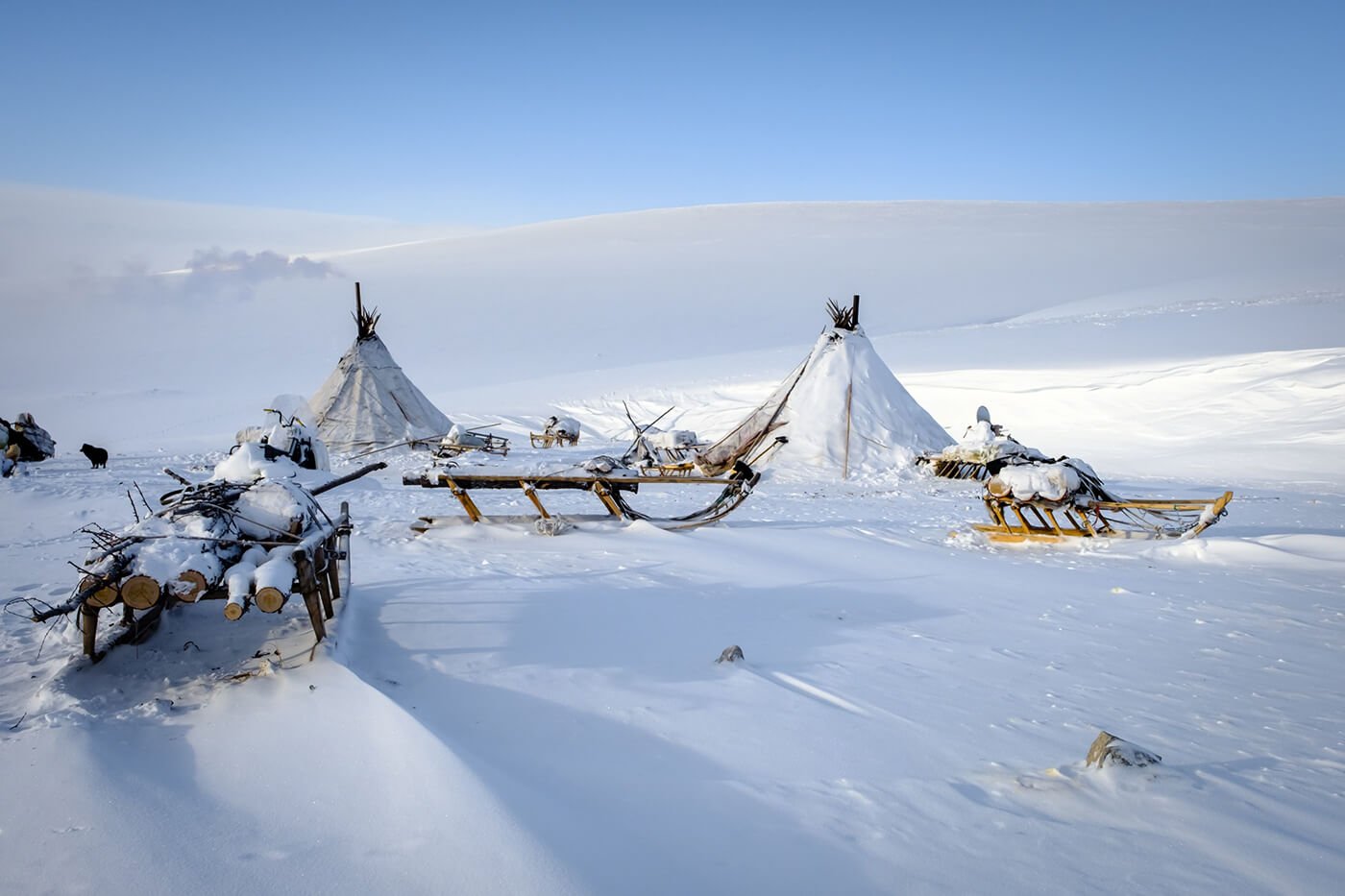
IMAGE COURTESY OF MARKUS BENDLER
www.portfolio.markus.bendler.ch / @markus_bendler
“The Winter Life of a Yamal-Nenets Family. Yamalo-Nenets herders discussing about there reindeer herd. Photos by Sebastio Salgado inspired me to travel to the Nenets in Siberia. The Nenets are an indigenous people living in northern Siberia on the Yamal Peninsula. Their culture and way of life are determined by the Siberian Ren. The Nenets spend the winter in their tent settlements. In summer, they lead their Ren herds north to the north polar region. The Nenets travel on sledges pulled by reindeer and breed Samoyed dogs to help them keep the herd together. In 2018, I was able to live with a Nenets family for 10 days and tried to help with the daily work. At temperatures of -30?C it takes special knowledge to live there. During this wonderful time I tried to document the daily routine.”
Editor’s comment: There’s a real sense of the theme in this image, which is compounded by the photographer’s accompanying text on their time in the area, living and working with the Yamal-Nenets Family. The photographer is not afraid to immerse themselves in their subjects’ world, to truly be able to document and share their story in an organic way. The image really opens our eyes to the environments some communities, armed with the right knowledge and experience, are able to thrive in.
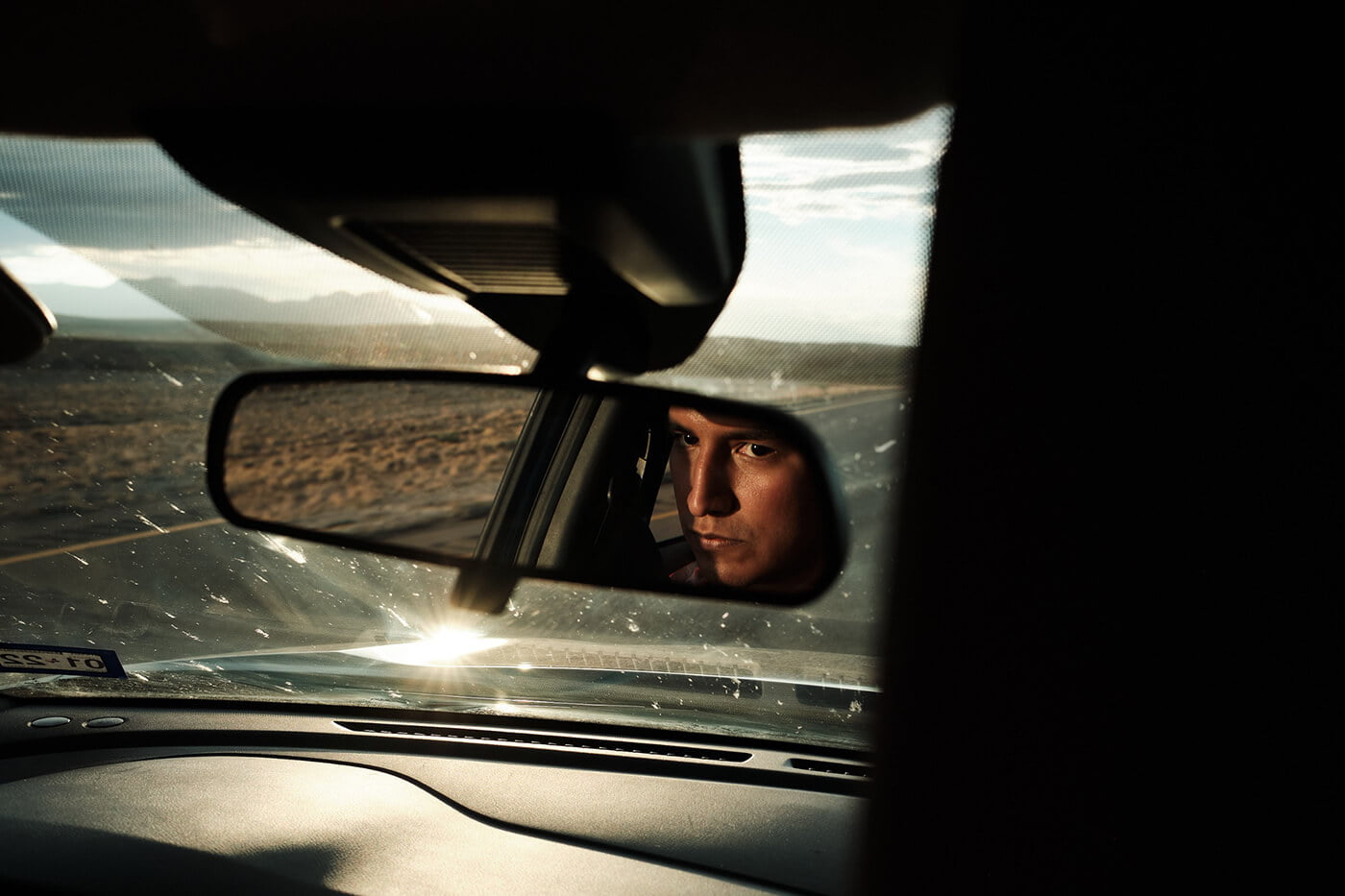
IMAGE COURTESY OF HENRY CRAVER
www.henrycraver.net / @henrybakercraver
“Robert Palacios, an El Paso native, drives along the I-10 highway in west Texas. This photo was taken on the way back from a trip to Nuevo Laredo, Mexico, last summer.”
Editor’s comment: The fragments of light and multiple frames within the image quickly creates a classic cinematic scene. The driver wears an intense expression as he glances in the rear-view mirror which adds to the weighted atmosphere of the photograph. It’s a fun image on which to project your own imagination, and I’d enjoy seeing how the photographer documented the rest of this road-trip with their style.
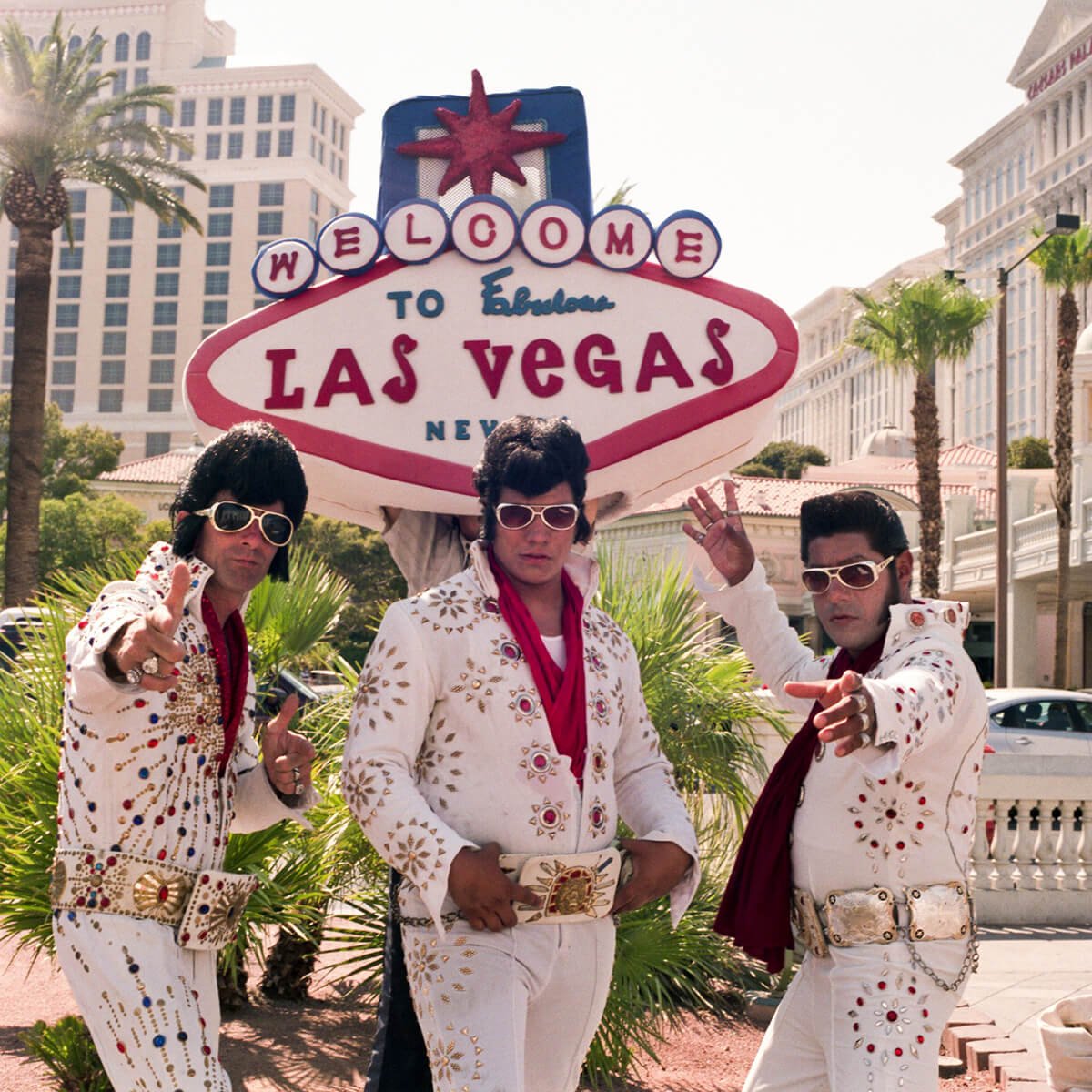
IMAGE COURTESY OF WILLIAM MARK SOMMER
www.williammarksommer.com / @williammarksommer
“Vegas Elvis. The heart of Las Vegas can be found in its performers that line the streets. These street performers hustle to make their money through antics or being your favorite celebrity. These wild caricatures portrayed by mainly Vegas locals brings together a unique culture of the imagined past while simultaneously creating a new culture in itself. Though these performers are looked down upon by the city they make up an essential part of what is Las Vegas.”
Editor’s comment: A well framed, symmetrical but typical Las Vegas, overfamiliar scene – making the viewer feel they’ve been there even if they haven’t, potentially even deterring them from ever venturing close. However, the photographer makes a point to stop and acknowledge these caricatured performers, ensuring the trio are embodying ‘The King’ from hair to toe with their striking poses. The image underlines the fact that this ‘Elvis army’ is a major bloodline to this town, drawing generations of fans and making these foot-soldiers a world-recognised tourist attraction almost as much as Elvis did himself.
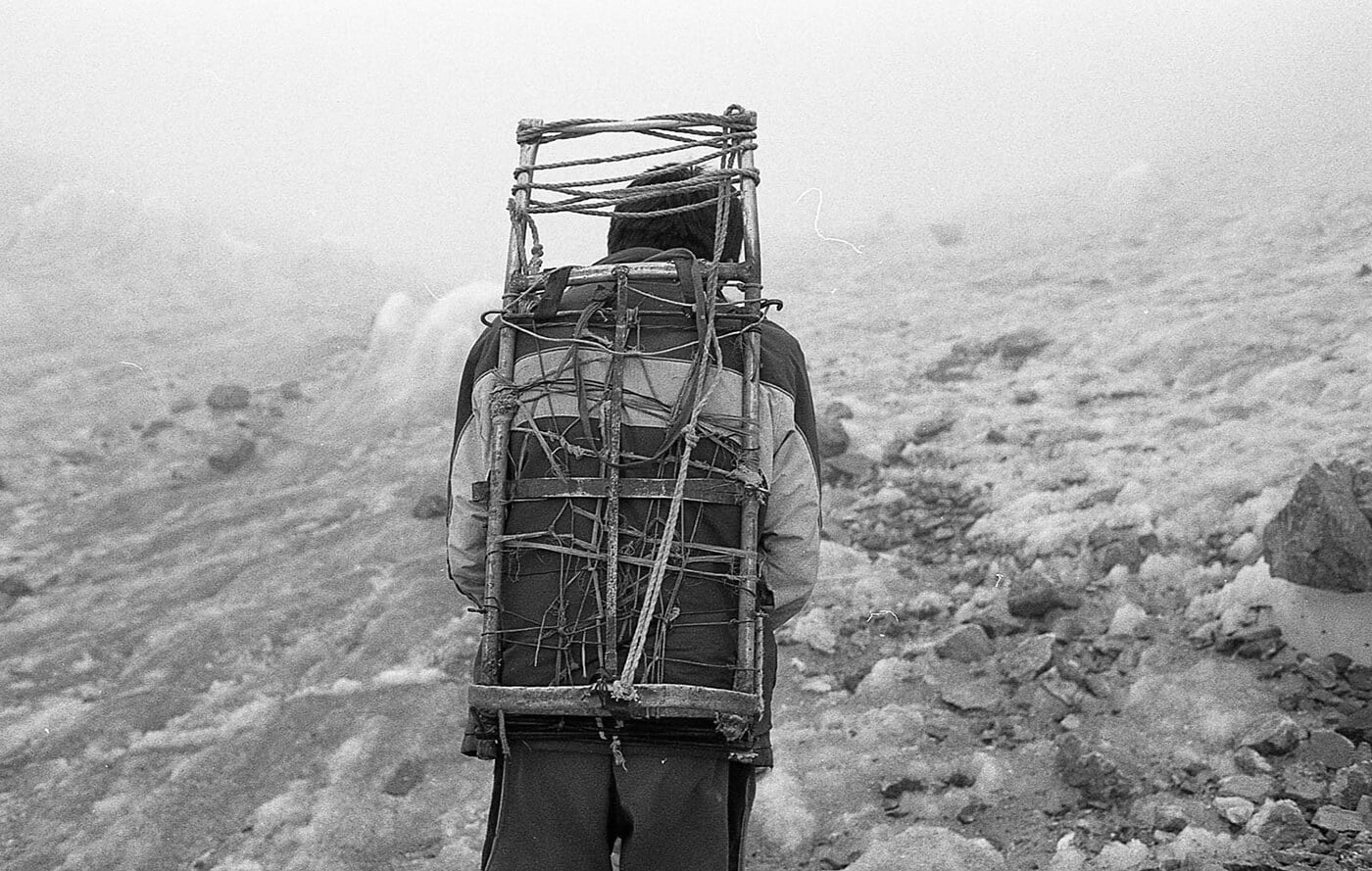
IMAGE COURTESY OF VOLODYMYR GRYNIUK
www.gryniuk.com / @volodymyrgryniuk
“Mountaineering and trekking industries uses a service of indigenous people for expedition stuff delivery to high altitudes. Usually those kind of peoples is called porters. Nepali porters are widely known, each year leading outdoor magazines publish a few articles about them. Their Pakistani colleagues have no that much attention from the media side, despite no Karakoram expedition could not happen without their participation. Two yrs ago, I had a chance to be a part of the Baltoro Glacier expedition in Pakistani Karakoram. Above 30 porters supported our team. This is the story about them. Porters carry all the stuff using self made metal frame as a backpack. Each porter carry around 25-30 kg of weights, and get 10-15 USD per day.”
Editor’s comment: A portrait detailing the reality behind these ‘extreme travel and adventure’ experience – the people who have made these exploration trips possible for generations. The conditions these local guides have to endure on a regular basis are extreme in many ways, and more from this side of the industry needs to be shown and the stories of the indigenous people shared. I would love to see the rest of this series and hear the photographer’s inspiration for the documentary work.
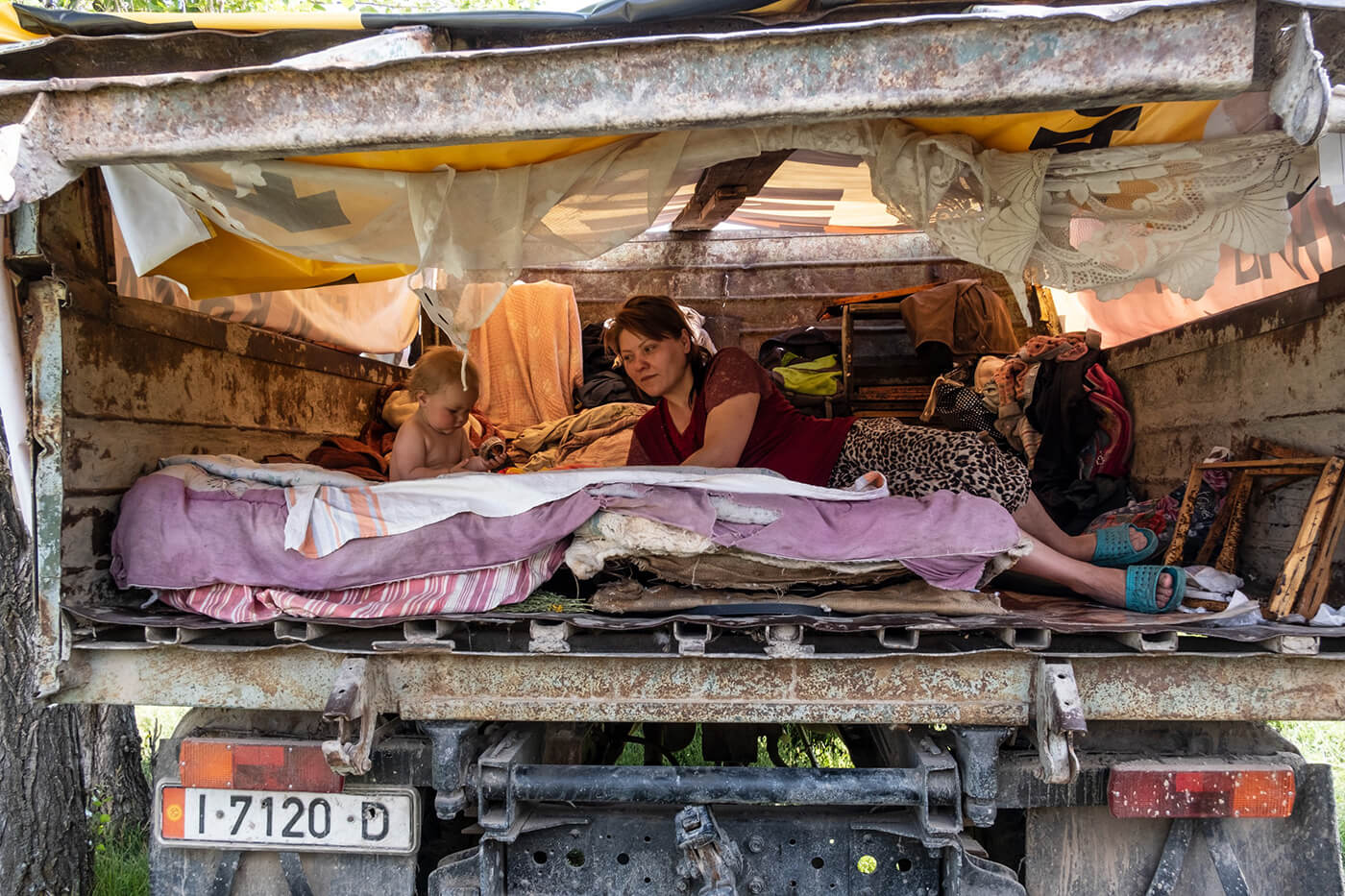
IMAGE COURTESY OF URI ZILBERMAN
@zilbermanuri
“A mother and daughter live in a truck, Kyrgyzstan.”
Editor’s comment: It’s extremely upsetting to see anyone living in such conditions of poverty. These images are always difficult to read, because as we travel the world and document these scenes, we must always ask ‘what legacy is it leaving?’ – are we helping these people within the frame in anyway or are we profiting for our own portfolios? I would love to hear more from the photographer about the purpose and intention with this image. It would be interesting to have more context to the image, perhaps the current socio-economic state of Kyrgyz Republic and the welfare system in place to protect its people from such conditions, that seems to be failing in this case.
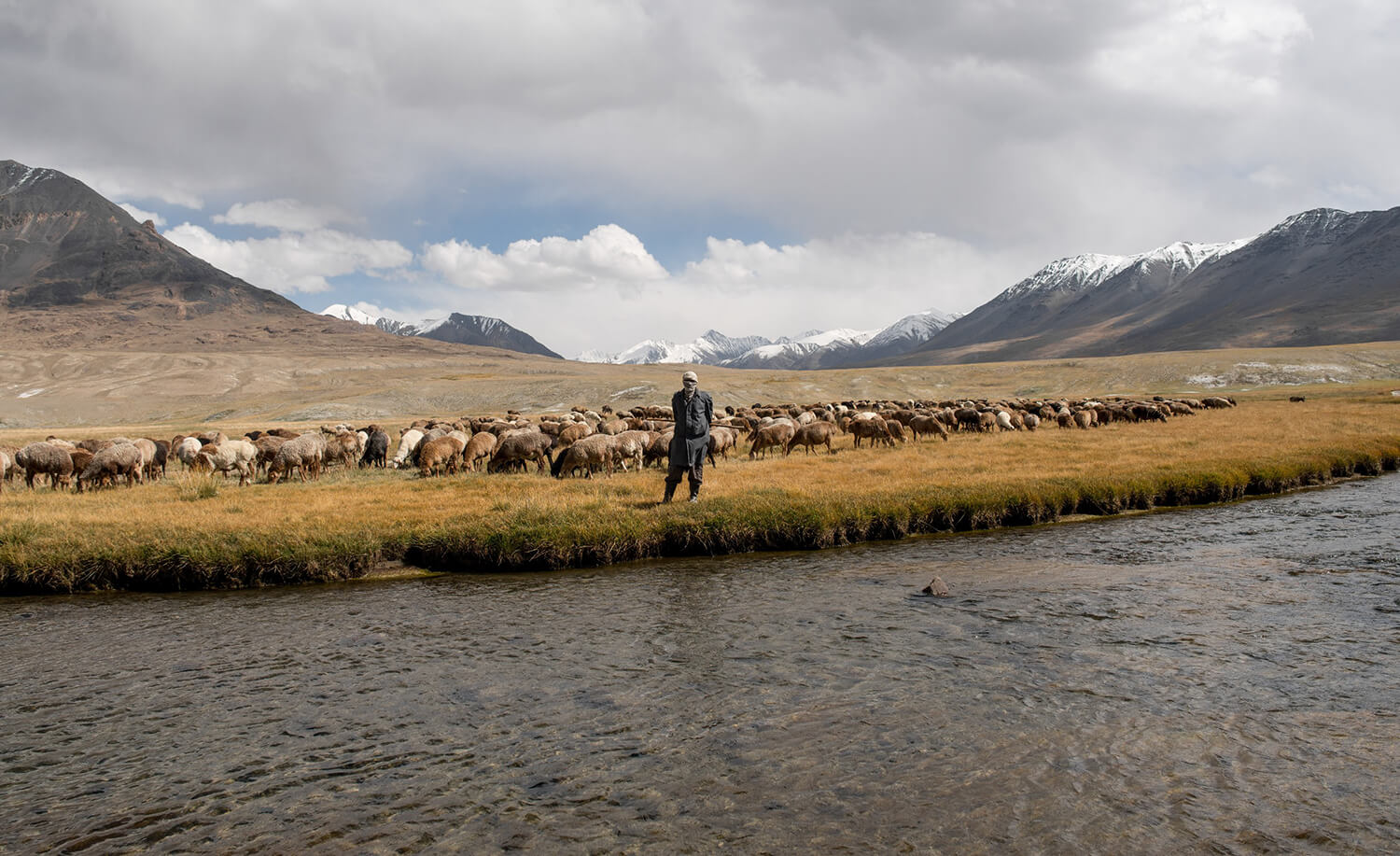
IMAGE COURTESY OF MARSHA LUI
www.marshajean.com / @themarshajean
“Afghan Shepherd on the roof of the world. Deep in the Wakhan Corridor of Afghanistan, a shepard and I exchanged greetings. This part of the world is often referred to as the roof of the world, because of its high attitude and remoteness. I was 21 years old, trekking for 19 days with a local man and his donkey.”
Editor’s comment: I loved the introduction to this image as much as the image itself: “Afghan Shepherd on the roof of the world”…what’s it like to be on the roof of the world? What type of life can you lead there? I imagine that this shepherd has carved a life of hard work and skill to exist in such a terrain. There is a feeling of ‘awe’ and respect from the photographer when capturing this portrait of their new acquaintance, surrounded by his flock with this impressive landscape as a backdrop.
